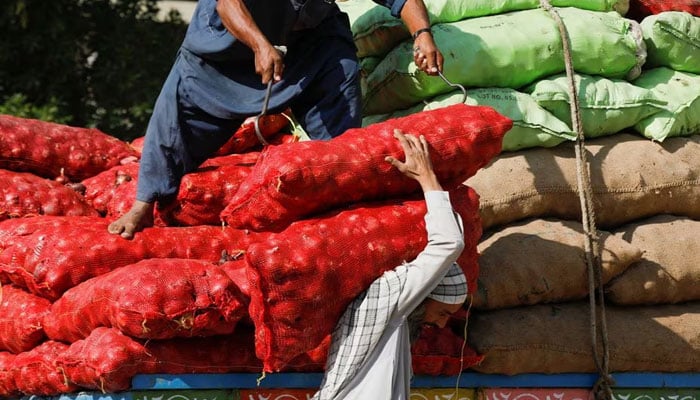According to official data released on Friday, the Sensitive Price Index (SPI) inflation rate decreased marginally in the week ending February 15 but remained high when compared to the same time in the previous year due to the ongoing surge in the costs of food and energy.
Based on weekly price fluctuations of 51 basic commodities, the Pakistan Bureau of Statistics (PBS) reports that the SPI decreased by 0.78% from the previous week. Nonetheless, the SPI increased 34.25% year over year, demonstrating the ongoing pressure on the nation’s cost of living.
The SPI for the prior week was 39.22% on an annual basis. The most recent SPI snapshot from the PBS, which primarily measures kitchen goods and includes data from 17 urban centers, showed that prices had increased for 22, decreased for 11, and remained unchanged for 18 items.
Over a one-week period, there was an increase in the price of bananas (4.64%) to Rs127 per dozen, potatoes (2.8%) to Rs56/kg, matchboxes (1.31%) to Rs6.18/box, long cloth (1.3%) to Rs573/meter, cooked dal (0.8%) to Rs144/plate, shirting (0.63%) to Rs421/meter, moong pulse (0.56%) to Rs309/kg, broken basmati rice (0.56%) to Rs225/kg, mutton (average quality) 0.5% to Rs1751/kg, cooked beef (0.39%) to Rs276/plate, and mash pulse (0.35%) to Rs549/kg.
Weekly prices, however, showed a decline of 29% to Rs280/dozen for eggs, 4.23% to Rs449/kg for live chicken farms, 3.5% to Rs202/kg for onions, and 2.85% to Rs3,246 for LPG 11.67kg cylinders. In a same vein, the price of gur dropped by 1.13% to Rs208/kg and that of a 20-kg bag of wheat flour by 0.32% to Rs 2801. In comparison to the previous week, the price of tomatoes decreased by 0.3% to Rs108/kg and the price of masoor pulse decreased by 0.28% to Rs336/kg.
Income brackets have been divided into five quintiles by the PBS, each of which corresponds to a different SPI level. The SPI was 28.68% in the lowest quintile, which includes people making up to Rs17,732 a month. The SPI was 32.08% for people in the highest income group, defined as those who spend more than Rs44,175 a month. In contrast, those in the middle quintile—those whose salaries are between Rs22,889 and Rs29,517—saw an SPI of 38.54%.
Because Pakistan’s minimum pay is Rs. 35,000 per month, critics argue that these income quintiles, especially those with lower salaries, may not fairly represent the country’s socioeconomic realities. They support changing these income levels to more accurately reflect the actual state of the economy.
One noteworthy aspect of the weekly bulletin was the excessive yearly rise in the cost of certain kitchenware and commodities. Gas costs for Q1 (1108.6%), tomatoes (134%), chilli powder (81.7%), cigarettes (77%), wheat flour (66%), men’s sponge chappal (58%), sugar (55%), men’s sandals (53%) and gur by 49% are notable examples of these. In a similar vein, the price of rice IRRI-6/9 went up by 30%, garlic by 32%, tea Lipton by 33%, and salt powder by 40%.
Additionally, the cost of mash pulse and garlic was 32% higher than that of basmati rice broken by 27%, potatoes by 25%, powder milk by 22%, fresh milk and masoor pulse by 20%, and the cost of energy for the first quarter was 15.44% higher than that of the same week the previous year.
On the other hand, bananas (18%), mustard oil (16%), vegetable ghee 1-KG (15%), cooking oil, and vegetable ghee saw 10% price decreases year over year. The cost of LPG increased by 8.5% from the previous year.
I am a dedicated student currently in my seventh semester, pursuing a degree in International Relations. Alongside my academic pursuits, I am actively engaged in the professional field as a content writer at the Rangeinn website.







